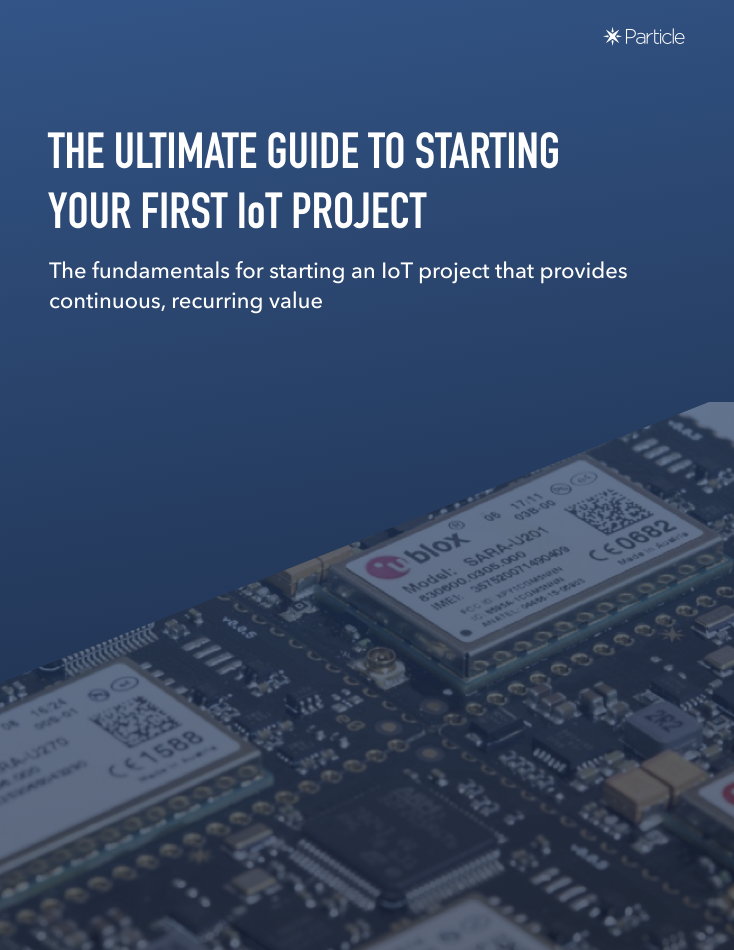IoT Insights
The leading edge of industry knowledge and best practices
How Watsco is building a new business model with IoT
Watsco wanted to create an “HVAC check engine light” that would let contractors and system owners diagnose and report on A/C system issues before an outage to reduce unnecessary truck rolls. Yet, building IoT capabilities in-house proved difficult, as connectivity was unreliable and the device certification process was too long. Building prototypes of A/C sensors on Particle’s platform, Watsco quickly realized that the Particle platform made it much easier to bring a connected product to market at scale. Particle abstracted all the complexity of building an IoT product , and allowed Watsco to focus on solving customer problems, not fixing connectivity issues.
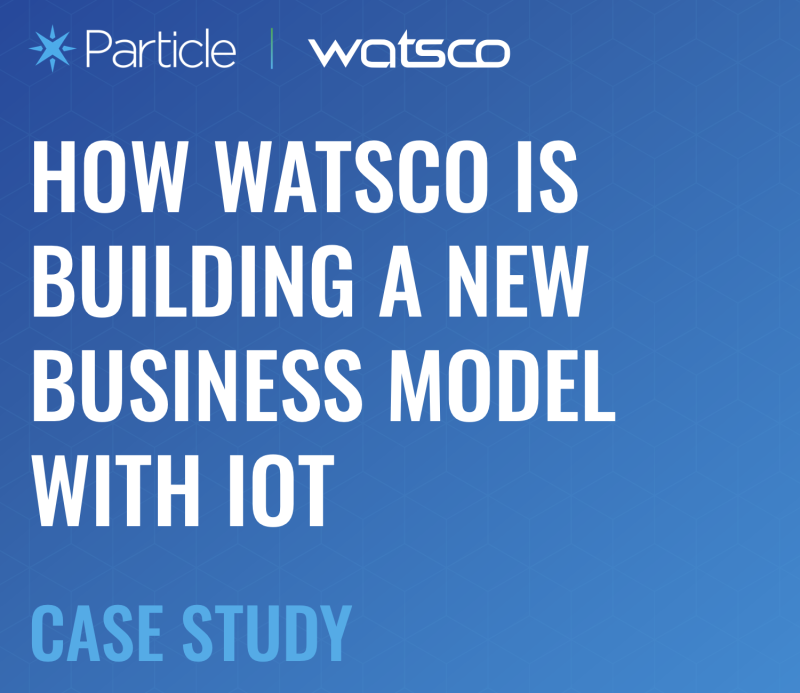
Should You Build or Buy an IoT Platform?
A successful IoT deployment requires seamless orchestration of different components and four layers of the technology stack, including hardware, operating systems, cellular connectivity, and software.
Enterprises that decide to devote internal resources to building and maintaining an IoT ecosystem often fail to recognize the true total cost of ownership and how connectivity will drive business value. Many enterprises also neglect the risks that come with trying to build IoT themselves, such as delayed time to market, failed interoperability between microservices, and uncontrollable costs.
The “build vs. buy” decision is complex, and there are a lot of factors to consider before you start an IoT project. In this guide, we’ll show you the decision factors you should consider so you can make an informed choice about how to bring connectivity to your products.
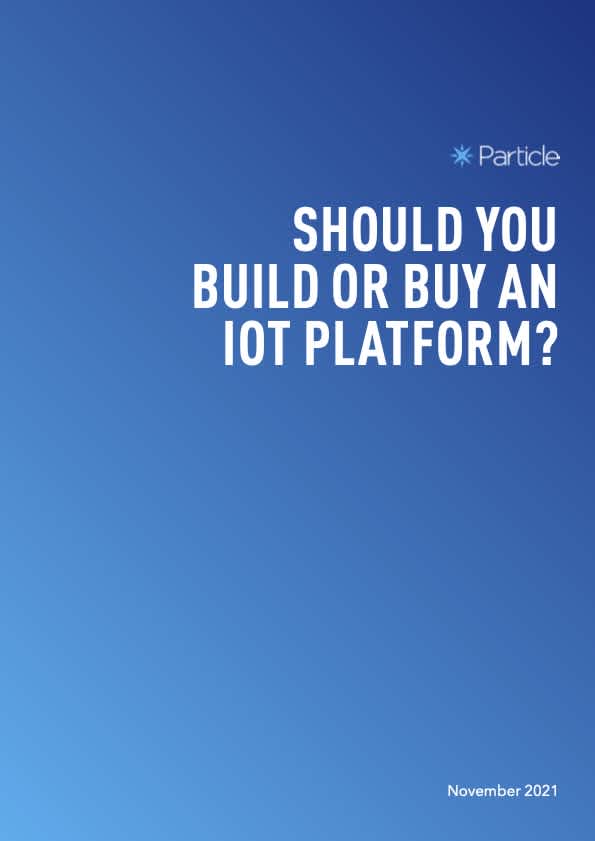
Micromobility and Regulatory Compliance
Micromobility, defined as electric motorized vehicles such as e-boards, e-scooters, and e-bikes that weigh less than 500 pounds and are used for urban trips under 5 miles, is increasingly seen by city planners across the world as a key part of solving their toughest transportation challenges.
The opportunity for micromobility operators to develop and maintain civic partnerships and grow their reach is vast. But today’s micromobility operators can’t act like those of years past. Speed to market is only one part of the puzzle. Building and operating a fleet that can not only ease the transportation burdens of city residents but also help city planners make better decisions with data will be a critical competitive advantage.
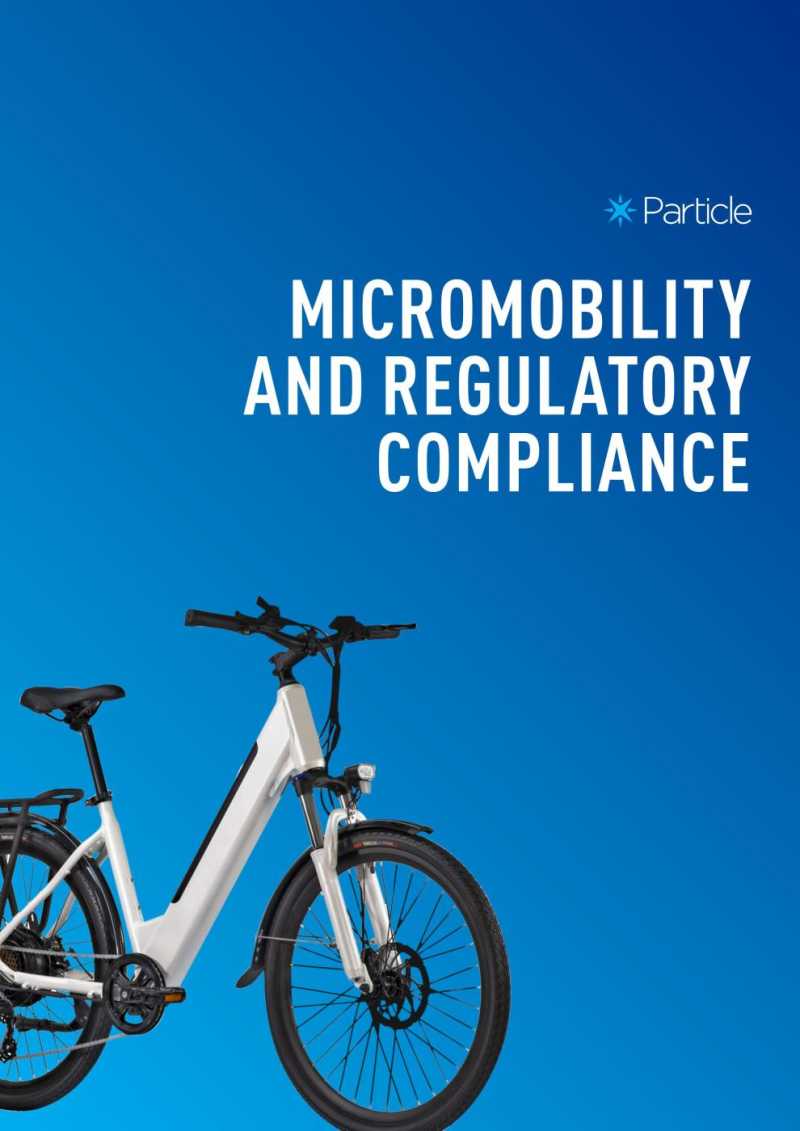
How Device OS Powers Your IoT Product
At Particle, we commonly differentiate ourselves from other IoT solutions by saying we are “fully-integrated.” This means that we handle all the complexity of IoT for you, so that you can focus on your core product, not IoT infrastructure. Particle's operating system, Device OS, perfectly captures this differentator because it facilities the complex integration between hardware, firmware, and network connectivity on all Particle devices.
Managing this complex integration is often underestimated as a nontrivial responsibility, but it is a large reason why 75% of companies that bite off new IoT initiatives fail to deliver them on time. The most successful companies are the ones that work with their IoT partners at every level of integration, not leave the hard work to you. This paper explains why this integration work is so challenging, and how Device OS manages this complexity for you.

How Long Term Evolution Technology Stands To Change The IoT Marketplace
For the past 2-3 years, both the cellular and IoT industries have been abuzz with the imminent arrival of cheap, lightning-fast, widely-accessible LTE. The entrepreneurs, developers, companies, and journalists waited patiently as deadline after deadline passed. But eventually, that patience gave way to frustration and ridicule. And rightly so.
Finally, with the release of Particle's E SoM LTE Module, accessible, scalable LTE for IoT has finally come to fruition. With this new technology, everyone from individual developers to multinational corporations will find real, substantive value from this new form of cellular connectivity. In addition to lower hardware costs and superior coverage, LTE adopters will be certain to future-proof their products from the inevitable sun-setting of 2G and 3G bands.
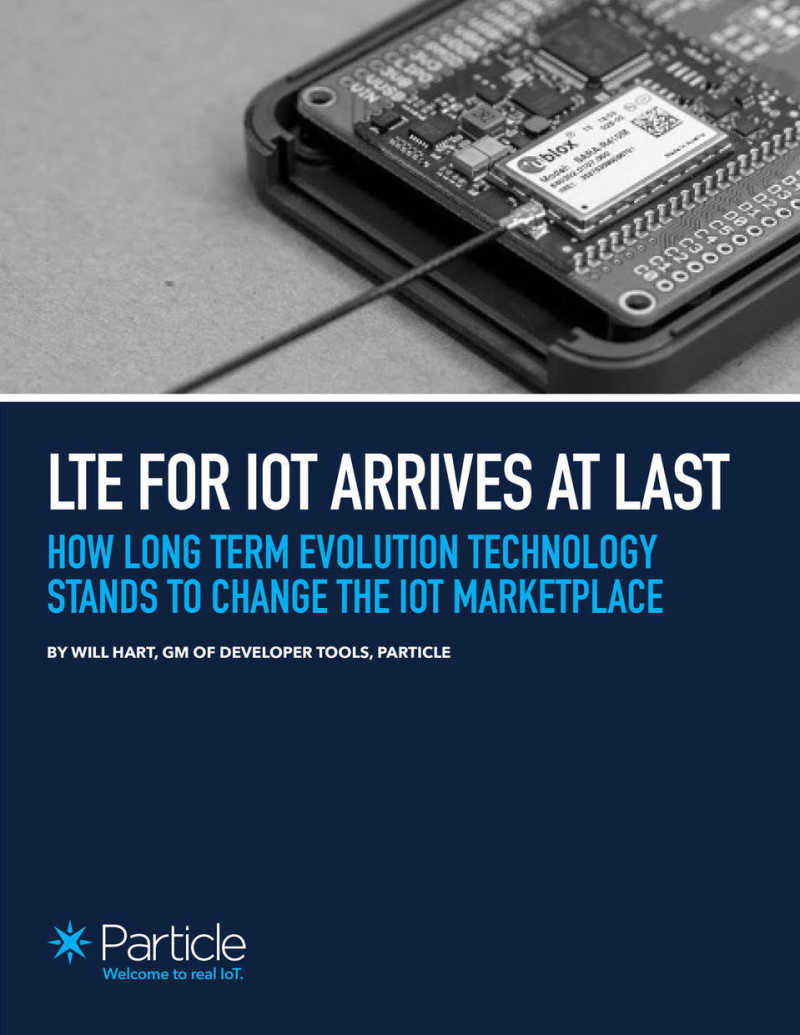
Power Management for Internet of Things Devices
When designing an IoT product, it is important throughout the design process to consider how a device’s behavior will effect its energy budget. Energy consumption, battery capacity, and power generation are key components of the energy budget. This paper includes recommendations for optimizing power usage, storage, and generation. These recommendations include methods for low-power component selection, proper use of sleep modes, and selection of the proper type of radio and correct battery chemistry.
Because low power applications are so common for IoT and connected devices, Particle hardware and software supports these design strategies and provides flexible and intuitive engineering tools for getting the most customer and business value from a single charge.
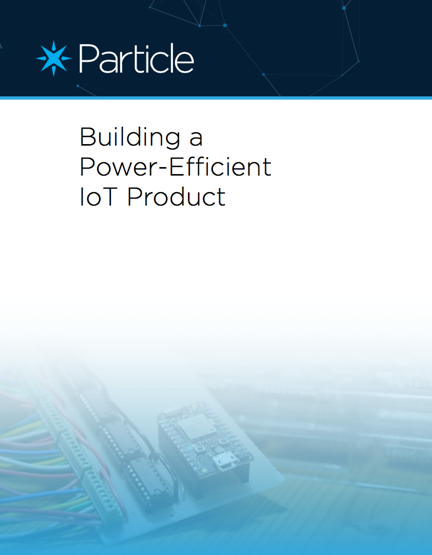
The Emerging Economics of IoT
As with every major technological sea change, the emergence of the Internet of Things (IoT) has occasioned both widespread success and widespread failure. The enthusiasm with which entrepreneurs, investors, and governments have embraced IoT is a testament to its profound social and economic potential. In many cases, however, enthusiasm has outpaced understanding. As a result, the emerging IoT industry has been rife with the kinds of miscalculations and misapplications that often plague early adoption.
As IoT moves past its infancy, however, certain trends and economic realities are becoming increasingly clear. The most significant of these revelations is that traditional hardware business models do not readily apply to IoT technologies. This is due primarily to the fact that IoT devices carry recurring, infrastructure-related costs that don’t apply to traditional hardware. As a result, IoT technologies only prove truly advantageous when their application results in recurring, continuous value for the customer. This paper reviews the main use cases that result in such continuous value - including Compliance Monitoring, Preventative Maintenance, Remote Diagnostics, Asset Tracking, Automatic Fulfillment, and Premium Consumer Upsell.
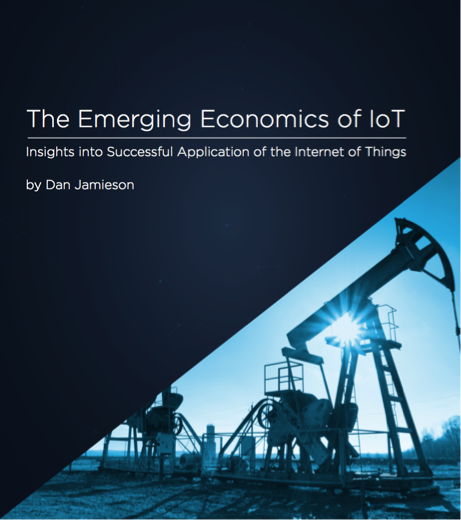
How the Internet of Things is Revolutionizing Supply-Chain Management
IoT technologies are proving revolutionary in their ability to provide inexpensive solutions to some of supply-chain management’s most costly and complex problems. More sophisticated and affordable asset tracking, state monitoring, and data collection have granted unprecedented oversight and control over supply chains of all sizes. In this paper, we will explain how IoT solutions stand to make such a monumental impact across the entire supply chain.
IoT has provided supply chain managers with increased visibility of assets through the entire supply chain. This visibility stretches from the factory to the point of consumption. Visibility opens up many areas for supply chain improvement including improved demand forecasting, better customer service, and reduced operating costs. To find out more about how IoT is changing supply chains, fill out our form at the right.
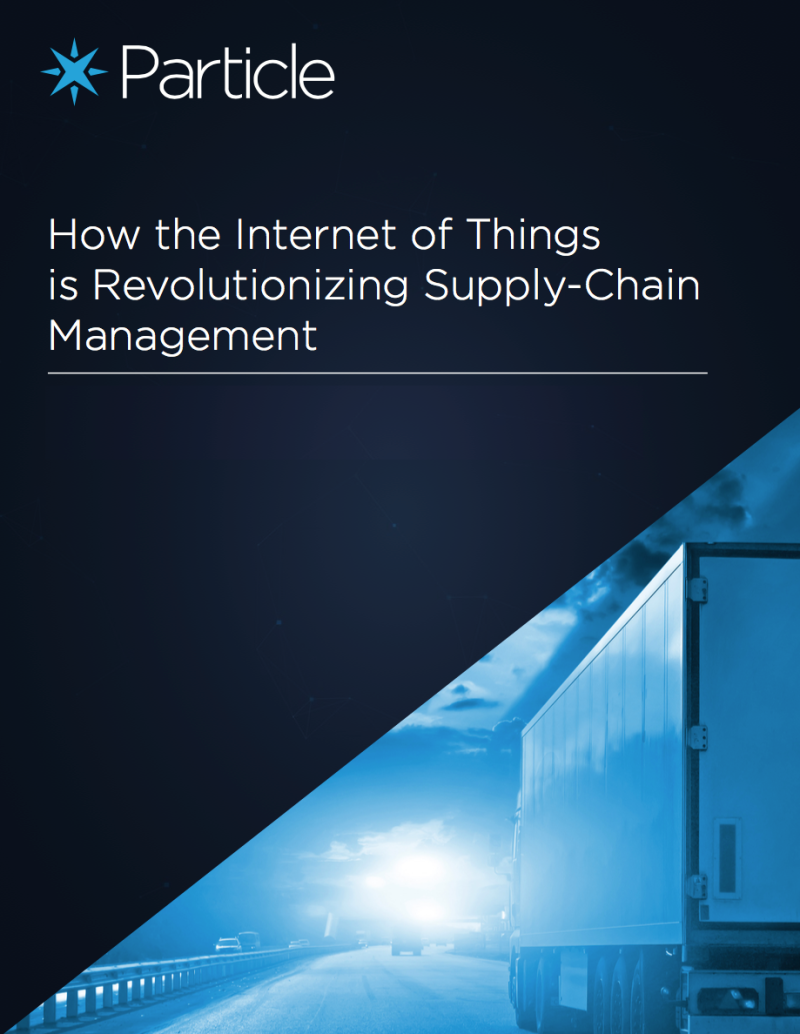
Security Checklist For The Internet of Things
By the end of 2020, there will be 21B IoT devices worldwide, creating a massive network of self-driving cars, connected energy grids, and smart appliances. As innovative companies build towards this connected future, they must constantly evaluate the risks that come with these large IoT networks.
This paper will detail the unique risks of connected devices and best practices for IoT security. It is based on the advice of experienced professionals and leaders in this emerging field.
Download this IoT security checklist and overview of Particle's approach to security in the Internet of Things.

How IoT is modernizing the transportation and logistics industry
The Internet of Things (IoT) has become one of the most comprehensive solutions for modernizing services and operations in the transportation and logistics industry. In fact, experts project that IoT technologies will have a $1.9 trillion impact on the industry. With so much opportunity, it makes sense that so many companies are looking to connect their assets and enter the IoT arena.
With the right IoT solution in place, enterprises can connect their operations, allowing them to track their assets remotely, be alerted the moment something starts to go wrong, and gain real-time visibility of their fleet management systems. To illustrate this impact, this paper will outline how IoT technologies have transformed inventory, logistics, and more in the transportation industry. This paper will also explain how Particle’s unique approach has helped clients develop effective IoT solutions that have transformed their fleet management systems.
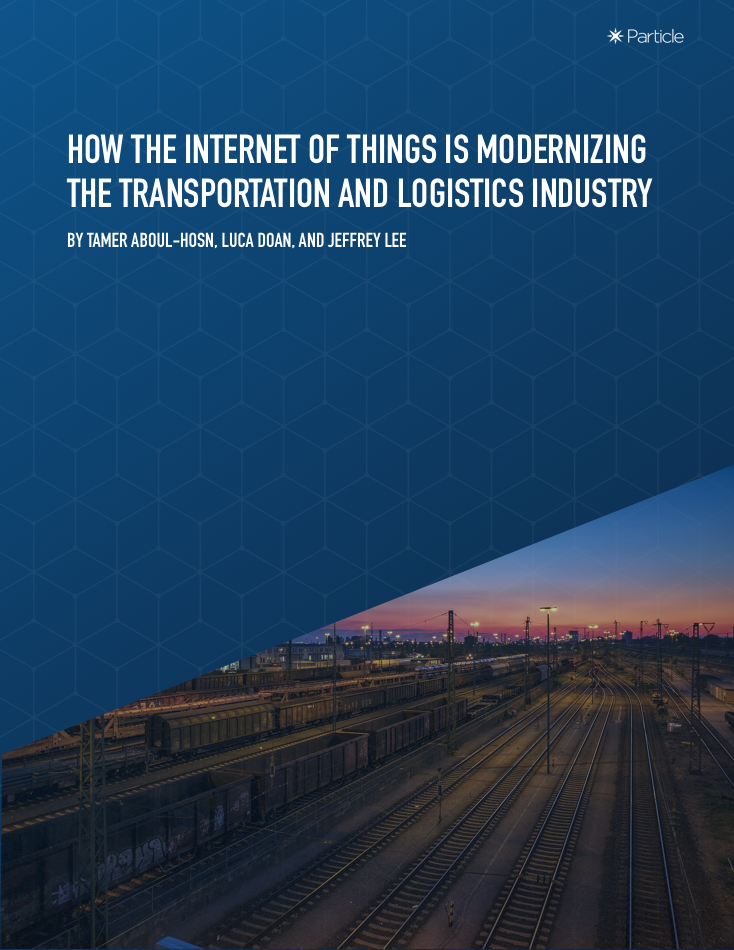
Prototype to production: Building your first PCB Prototype
If you're an engineer, entrepreneur, hardware enthusiast, or anything in between, you've probably read or heard this phrase before - “Scaling a product from prototype to production is incredibly difficult.” Most experienced product designers, engineers, and production managers know this and wear their experience like a badge of pride.
However, the purpose of this ebook is not to endlessly catalog the perils of hardware, or to lecture on why it so frequently goes wrong. It's to convince you that, although bringing a product from concept to reality is difficult, you can do it. The purpose of this ebook is to provide you with helpful information and useful tools to make the process of bringing a product from prototype to production a little bit easier and a lot less intimidating.
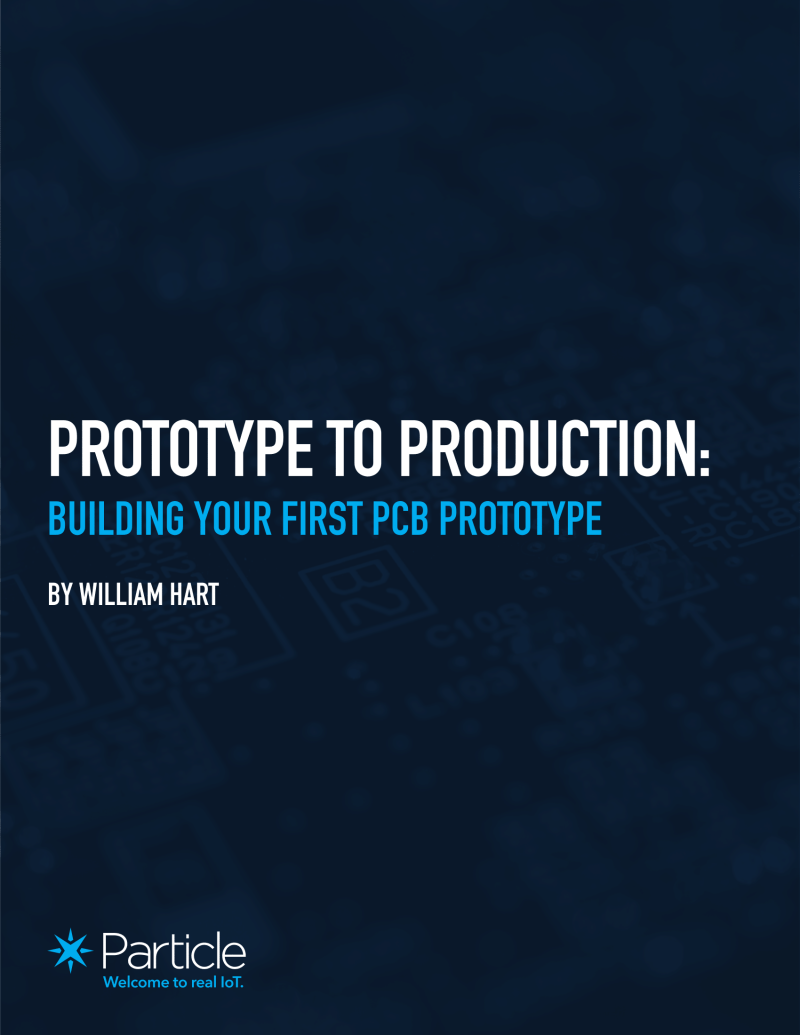
Six Ways to Make Money With IoT
According to the McKinsey Global Institute, IoT will have a total potential impact of up to $11.1 trillion a year by 2025. With so much opportunity, it makes sense why so many companies are looking to connect their devices and enter the IoT arena.
But simply adding an internet connection to your widget doesn’t mean your business will make immediate profits. IoT products come with significant ongoing costs – web infrastructure, networking, and other connectivity and data-related costs. If you can’t justify the additional value to your customers, those costs will eat away at your margins.
The most successful IoT products are those that deliver recurring, continuous value for your customers (and recurring revenue for you). While there are a lot of ways you can create value, we’ve found that there are six different primary ways companies make money off of their IoT products.
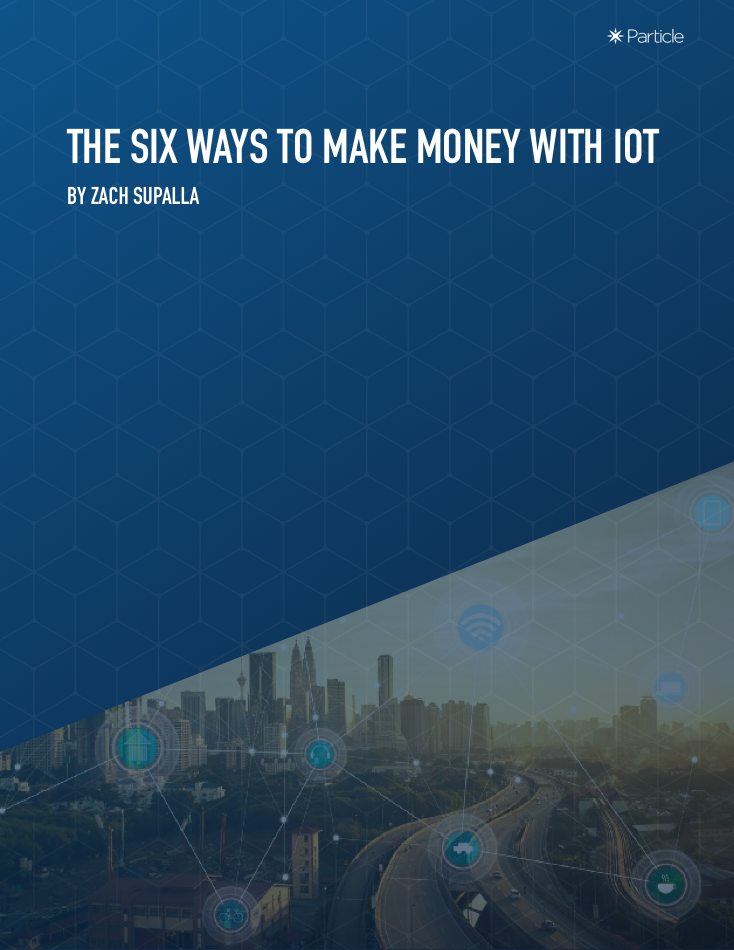
How The Internet of Things is Powering The Oil And Gas Industry
The Internet of Things (IoT) is transforming the oil and gas industry at a rapid pace, with experts projecting that IoT solutions could eliminate unplanned well outages, boost crude output by 10 percent over a two-year period, and increase profits by nearly $1 billion for large O&G companies.
In fact, IoT applications in this industry are predicted to increase GDP by as much as 0.8 percent, or $816 billion, over the next decade. With so much potential, it makes sense why 62% of oil and gas executives are developing a digital strategy to transform their business.
In this white paper, we’ll explain how IoT technologies have delivered value for upstream, midstream, and downstream O&G companies. While this value can be achieved in a variety of different ways, we’ll examine the major IoT use cases for each of the main parts of the O&G value chain.

How the Internet of Things is Helping to Fight Climate Change
In 2018, the west coast was on fire and the east coast was flooding. If it wasn’t clear before, it is abundantly clear now. The cost of ignoring climate change is only becoming worse. While it may not seem like much is being done to protect the environment, many entrepreneurs have been turning to the Internet of Things to counteract the effects of climate change and other environmental hazards.
In fact, experts estimate that IoT could account for a 15% emissions decrease across industry sectors by 2030. Additionally, by 2025, industry experts believe there will be more than 60 billion IoT devices deployed worldwide. With so many devices, IoT is expected to have an economic impact of $11.1 trillion a year. As such, the possibilities afforded by IoT are abundantly clear, which is why so many climate advocates and entrepreneurs have been turning to IoT to counteract climate change.
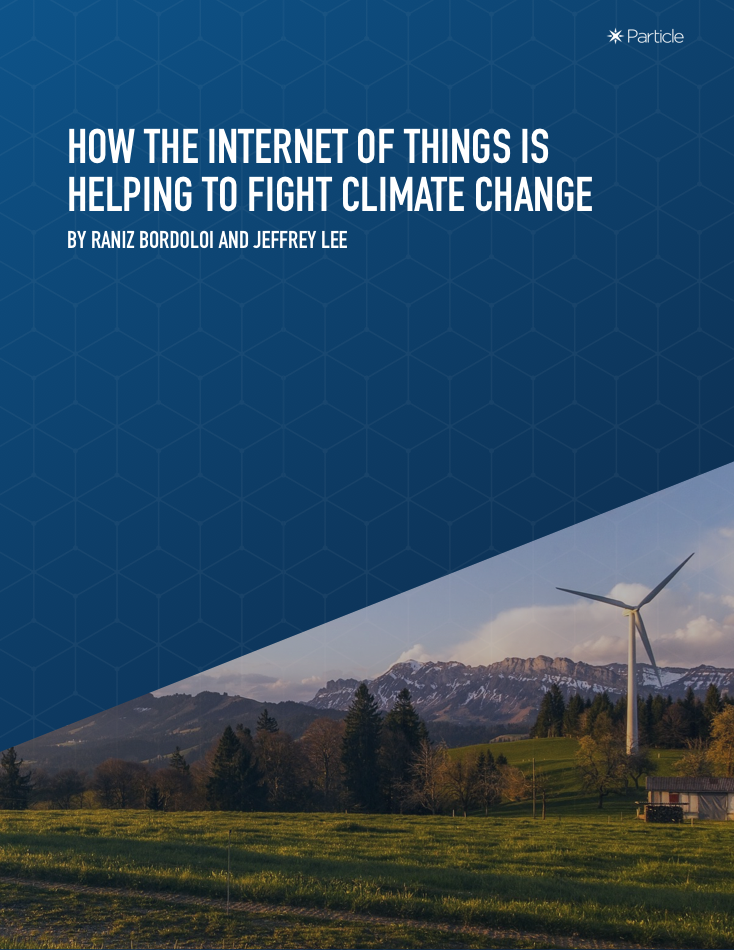
The Digitization of the Alcohol Industry
Over the last decade, digital technologies have helped established organizations and smart entrepreneurs dramatically transform business processes and optimize production.
While these technologies can bring tremendous benefits, some industries like alcohol often experience adoption limitations due to strict production and regulatory requirements.
However, many companies in the alcohol industry have found ways to overcome these adoption challenges with the assistance of inexpensive, smart IoT solutions. This white paper serves as a brief primer that explains how companies like breweries, wineries, and distilleries are implementing these smart IoT solutions.
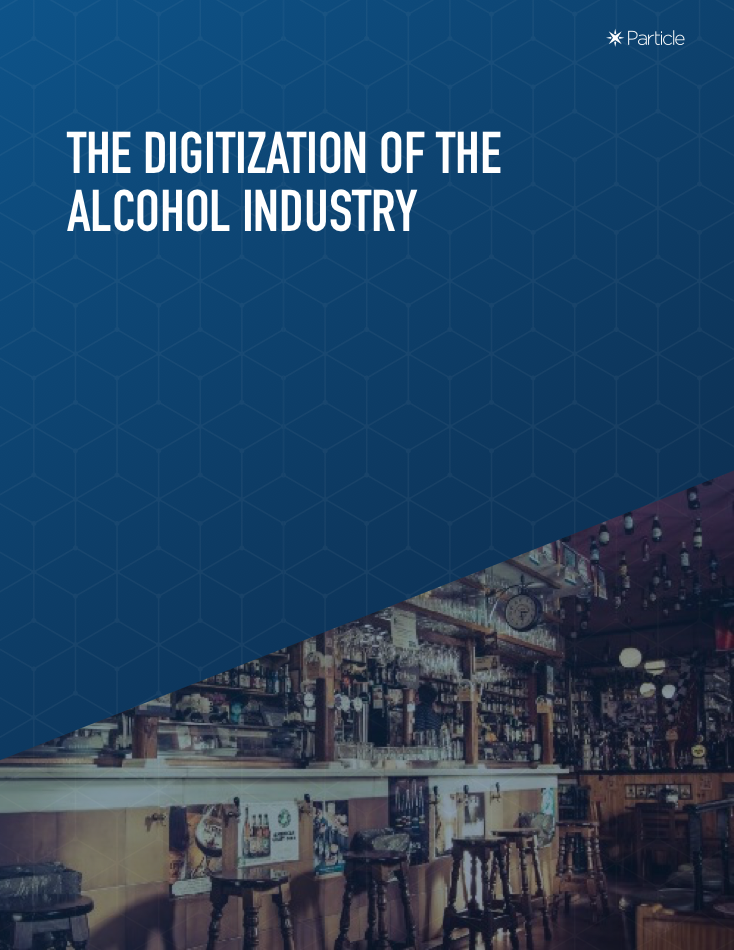
How to design a secure mobility service
When managing a fleet of electric scooters or bikes, you have to implement more than a physical lock to build a secure mobility service. The real work is in the electronic security (securing device communication, user data, and more). That’s because new software bugs and security vulnerabilities are discovered all the time in connected micromobility fleets.
As innovative companies build the future of transportation, they must constantly evaluate the security risks that come with connected micromobility fleets. This paper will detail the unique risks of connected devices and best practices for protecting your electric scooters and bike fleets.
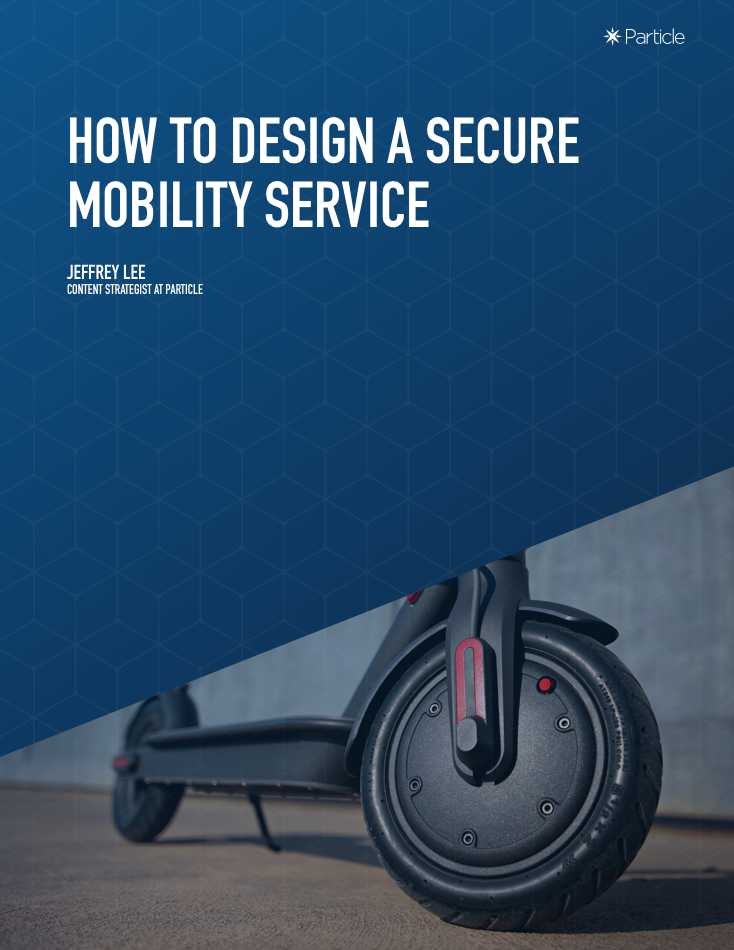
How to Solve the 6 Biggest Challenges in Micromobility with the Internet of Things
As more and more companies enter the micromobility space, they are facing unparalleled challenges when building and deploying electric scooter and bike fleets. Nowadays, a typical player in the space not only has to build, deploy, and scale their micromobility operation rapidly, but they also have to navigate complex governmental regulations that change city-by-city.
These new governmental regulations have forced many micromobility companies to take a closer look at their business and the systems that power it. While rapid deployment is still important, the most successful micromobility companies are now building flexible mobility ecosystems that are able to adapt to future business challenges. One of the biggest ways operators are creating these flexible mobility ecosystems is through the Internet of Things.
Companies that take their time and implement comprehensive IoT solutions are able to overcome some of the biggest challenges in the micromobility industry. Although, many companies often overlook the many ways IoT solutions can solve real business challenges. In this guide, we’ll explore how IoT is transforming the micromobility industry, and how the right IoT partner can help you build a flexible mobility ecosystem.
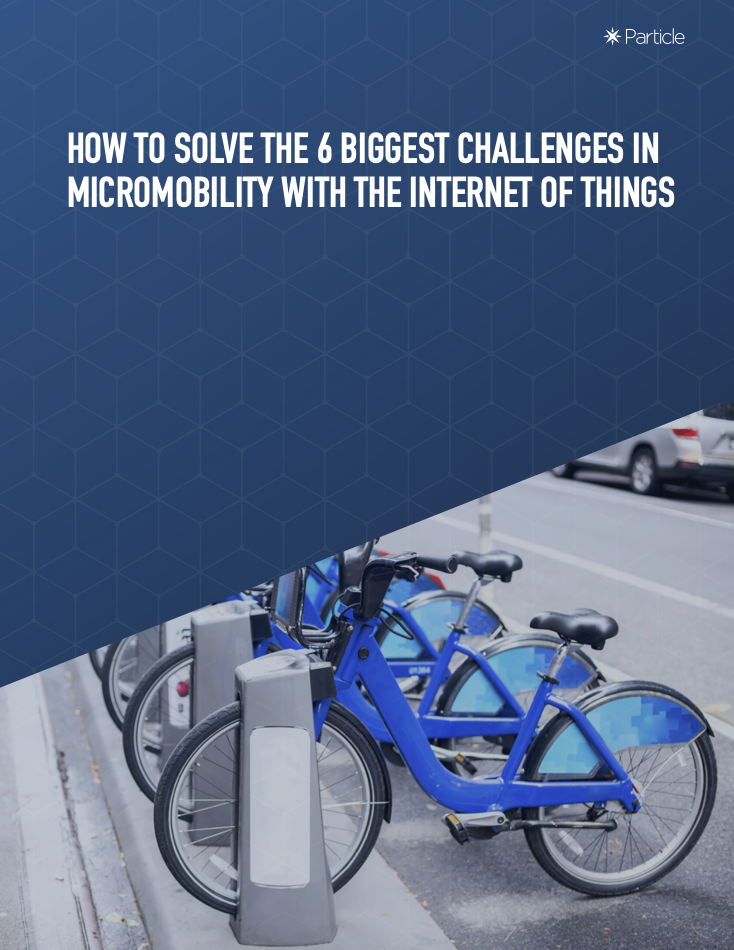
The Ultimate Guide to Starting your First IoT Project
So you’re thinking about starting an project. The question is, what do you build? How do you IoT build it? Or, what is an IoT project? Let’s start with that last question, shall we.
An IoT project is the act of connecting any physical object to the internet to collect and share data. How we use and share that data depends on the purpose of the IoT project. Whether you’re connecting windmills to monitor performance data, or connecting machinery to monitor itself for breakage, the data generated from these projects can be used in a variety of ways. With the right hardware, software, connectivity, and know how, you can connect any object in the home, factory, or farm and stream data to the Internet.
